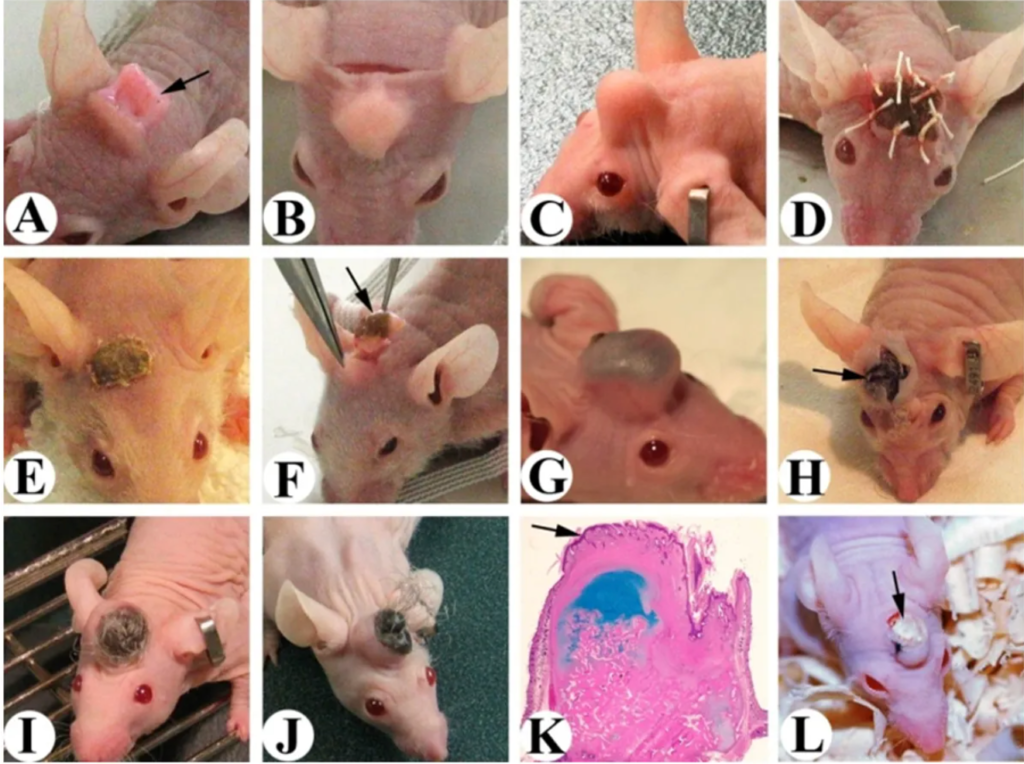Breakthrough in Regenerative Medicine Opens Doors for Skeletal Injuries and Limb Regeneration.
In a remarkable scientific achievement, researchers at Northwestern Polytechnical University in Xi’an, China, have successfully cultivated antler-like structures on the foreheads of mice using stem cells derived from deer antlers. This groundbreaking research could have far-reaching implications for regenerative medicine, offering hope for treating skeletal injuries and potentially regenerating lost limbs in humans.
The study, recently published in the journal Science, delves into the fascinating world of antler regeneration—a process that is one of the fastest-growing phenomena in the animal kingdom. Deer antlers can grow at an astonishing rate of up to 3/4 of an inch per day during their peak spring growth cycle, reaching full maturity in just a few short months.

The researchers at Northwestern Polytechnical University embarked on a mission to unravel the secrets behind this rapid growth. They meticulously examined the cellular makeup and gene expression patterns of antler tissue throughout various stages of development. This exploration led them to the discovery of a specialized group of cells known as “antler blastema progenitor cells” (ABPCs). These ABPCs originate from mesenchymal cells and play a pivotal role in directing the regeneration of antlers.
Armed with this newfound knowledge, the researchers isolated stem cell populations with robust regenerative potential from deer antlers. These highly capable stem cells were then implanted into the heads of laboratory mice. Astonishingly, within a mere 45 days of implantation, the mice began to develop tiny antler-like structures.
One key finding of the study was that the most effective cell implants were obtained from shed antlers that were no more than five days old, shedding light on the importance of the timing and freshness of the antler material used.

This groundbreaking achievement opens up exciting possibilities for regenerative medicine, particularly in the realm of skeletal injuries and limb regeneration. The researchers envision a future where deer stem cells could be harnessed to heal bone injuries and potentially regrow lost limbs in humans.
While this technology is still in its experimental stages, the implications are profound. It offers hope for individuals who have experienced severe injuries or limb loss, providing a potential avenue for recovery and improved quality of life.
As the scientific community eagerly anticipates further developments in this field, the research conducted at Northwestern Polytechnical University underscores the limitless potential of regenerative medicine. The ability to use deer stem cells to grow miniature antlers on mice serves as a testament to human ingenuity and our ongoing quest to unlock the secrets of nature.
In conclusion, this remarkable breakthrough in regenerative medicine could change the lives of countless individuals affected by skeletal injuries and limb loss. As research and experimentation continue, the world watches with bated breath to witness the transformative impact this technology could have on the future of healthcare.
Resources:
1.https://interestingengineering.com/science/mini-antlers-mice-stem-cells-deers
2.https://www.progress.org.uk/deer-stem-cells-used-to-grow-mini-antlers-on-mice/
3.https://boingboing.net/2023/03/20/mice-genetically-engineered-to-grow-tiny-deer-antlers.html
4.https://tvpworld.com/68585526/scientists-grow-antlers-on-mice-hope-to-regrow-human-limbs
5.https://www.freethink.com/science/deer-antlers-regeneration
6.https://www.nature.com/articles/d41586-023-00567-3